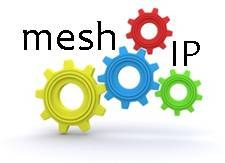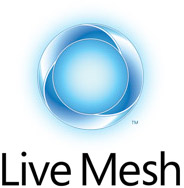 So much digital ink, on InfoWorld and elsewhere, has been spilled analyzing cloud computing — what it is, whether it’s anything new, whether it will change IT as we know it. But a recent conversation has me thinking that cloud computing’s greatest contribution may be in the way it applies the principles of mass production to IT.
So much digital ink, on InfoWorld and elsewhere, has been spilled analyzing cloud computing — what it is, whether it’s anything new, whether it will change IT as we know it. But a recent conversation has me thinking that cloud computing’s greatest contribution may be in the way it applies the principles of mass production to IT.
Last week I spoke with Siki Giunta, vice president of cloud computing and software services at global IT consultancy CSC. Giunta, who has led seven large-scale cloud engagements for CSC, says that from her standpoint everything centers on the cloud service catalog.
In other words, a whole range of IT functions — from email to dev and test to supplier relationship management — can and should be thought of as commodity services. And once you accept that, you might as well pick those services from a menu provided by a professional services firm that can deploy and scale them in a standardized, secure, and highly available fashion.
For me, this draws a clear line of demarcation between enterprise-class cloud solution providers like CSC and old-fashioned, full-blown IT outsourcing. The old model was: Have-it-your-way. The new model is: Choose from the catalog; we’ll provide a real SLA with real penalties for downtime, but if you want custom stuff, go elsewhere, that’s not a cloud service. Interestingly, to Giunta it’s almost immaterial whether CSC provides the infrastructure or the customer does. It’s the same pay-per-use service from the same mold — and according to Giunta she can deploy in roughly 10 weeks either way.
This is completely different from how many people think about cloud computing today, which still revolves around uploading VMs to Amazon. As Giunta notes, Amazon has set a high bar in ease of use — import your VM to Amazon EC2 and you’re ready to roll — but a low bar in serviceability, as in it’s up to you to assemble everything you need to run useful workloads, including end-to-end cloud security. Of course, that’s what professional service organizations do: Put all those pieces together.
Nonetheless, I find it interesting that in the past month Amazon has upped the “serviceability” ante substantially with its Simple Email Service, AWS Elastic Beanstalk, and some new premium support options. If a generic compute platform in the public cloud was Cloud 1.0, then the Cloud 2.0 era of precooked, well-supported cloud services is already upon us. Salesforce and other SaaS providers were the first to identify applications that could be delivered as commodity services; now the cloud is penetrating deeper into enterprise IT and identifying other discrete service opportunities.
Giunta encourages her clients to look at their IT operations from the top down and identify workloads that are prime candidates to become cloud services. One of the things Giunta has learned from these engagements is that this aerial view forces clients to think in terms of data architecture above all. That is, due in part to security concerns, the question “where’s the data?” comes to the fore — where it’s stored, where it goes, how it’s protected, and which authenticated users are authorized to use it under what conditions.
Another key lesson is “test, test, and test again.” Hype about the cloud has led many to believe that the usual testing cycles no longer apply. But as in all transformative projects, full stress testing and a complete evaluation of user satisfaction are essential to success. What goes wrong most? In Giunta’s experience, basic problems with the way a client has already deployed virtualization can bring any cloud project to its knees. Smooth, sophisticated virtualization management provides the bedrock for robust cloud services.
Based on her experiences, Giunta offers one of the most aggressive predictions for the future of cloud computing that I’ve heard: In five or six years, 50 percent of workloads will be running as cloud services, either in the public or private cloud. Maybe she’s right. Cloud computing’s economies of scale have enormous potential to drive down IT costs (just ask Microsoft). Who doesn’t want that?
Many balk at the idea of breaking IT functions into a service catalog. Clearly, a wide array can’t be. But for better or worse, the idea of moving everyday workloads to standardized cloud services — so you can focus creative IT efforts on initiatives to boost business competitiveness — has become the conventional wisdom of the day.
- The Customer Edge Drives the Need for NaaS - June 25, 2023
- Blockchain Evolves And Secures - January 13, 2019
- Bessemer Ventures’ 2018 Cloud Computing Trends - February 25, 2018




